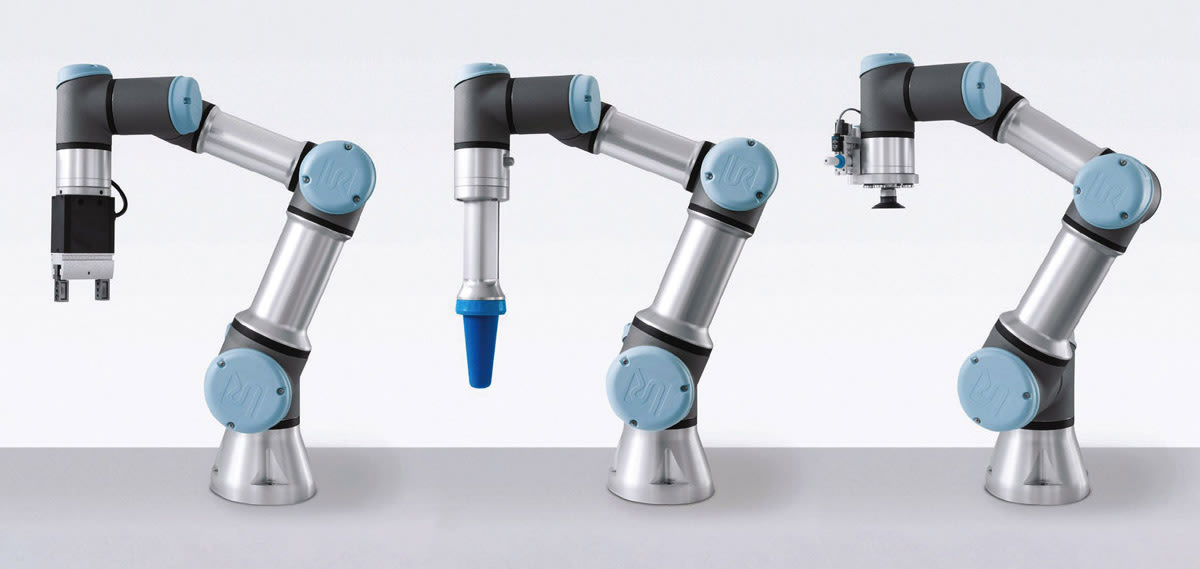From electronics manufacturing to automotive assembly, grippers have become an important part of material handling processes in many industries. Their recent growth is tied to the rise of robotics including the need for robots to take on special tasks and handle increasingly complex workpieces. The result is you now have more grippers to choose from than ever. In North America alone, the gripper market is worth roughly $100 million — and that number is expected to climb up to 5 percent each year.
With all the recent developments in robotics and gripping technology, it can be difficult to know which gripper is best for your application. This article provides an overview of common gripper types including mechanical, soft, adaptive, vacuum, and magnetic. It also explores their key design features as well as the benefits they offer in various applications.
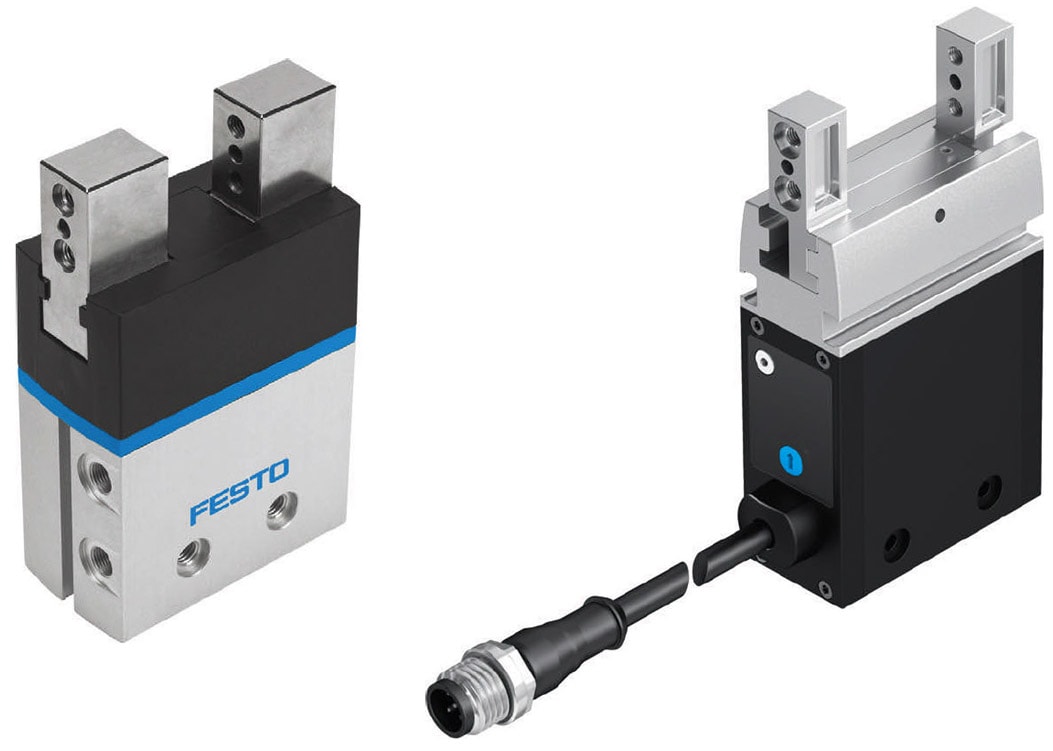
Understand What Your Application Demands
To help you select the right gripper, it’s important to first consider the nature of your task, operating environment, and workpiece including its size, mass, and material. Some key considerations and questions to ask yourself include:
Environmental. In what temperature range will your gripper operate? Will your gripper be exposed to dirt, dust, oil, or moisture?
Industry. Does your application involve food or other hygienic workpieces? Will your gripper be exposed to cleaning processes? Does your application require antistatic materials?
Design constraints. What direction of motion do you need? What is your application’s maximum operating speed? How large is your workspace? Will your operators be sharing the space with collaborative robots?
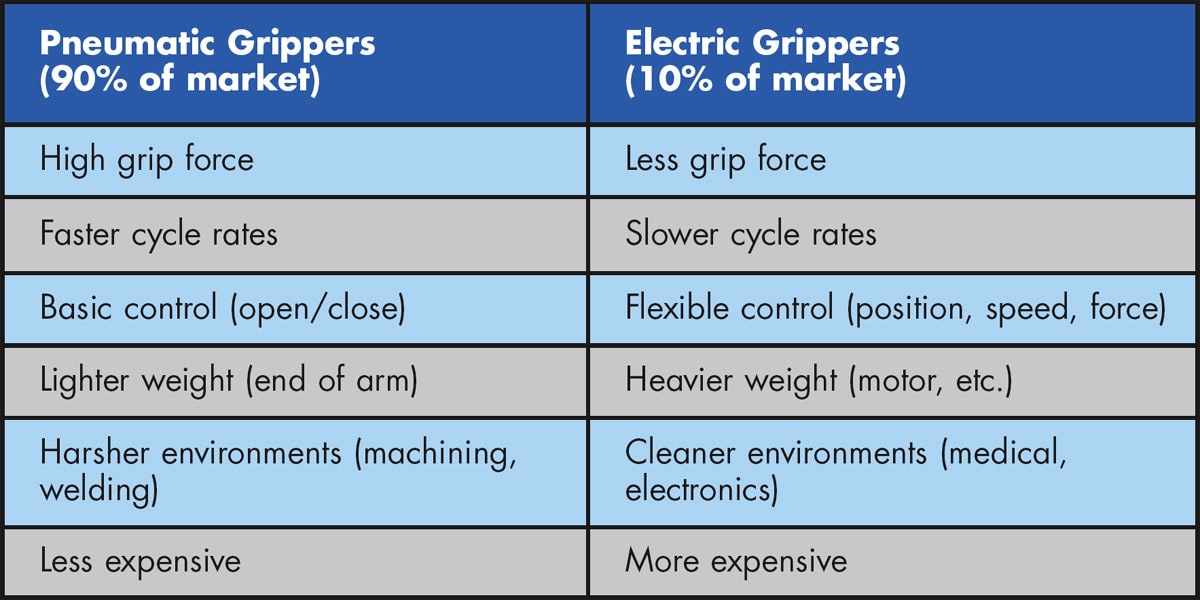
Other factors to keep in mind include up-front, operating, and maintenance costs as well as energy consumption. Grippers fall into several categories and your answers to the above questions will help you determine which type you need to get the job done as safely and efficiently as possible.
Mechanical Grippers: Proven Reliability, Flexibility, and Durability
When it comes to handling applications, pneumatic or electric mechanical grippers are the most common. Pneumatic grippers, which make up 90 percent of the market, tend to be more lightweight and cost-effective than their electric counterparts. They also feature higher grip forces, can handle faster cycle rates, and are more suitable for harsh environments. Electric grippers, on the other hand, offer greater precision, affording end users with force and travel control. At the same time, they tend to be heavier due to the presence of a motor and other internal components, which also drives up their up-front costs.

Whether electric or pneumatic, mechanical grippers fall into several design classes. Parallel grippers, for example, incorporate fingers that pull directly apart. Two-finger designs are the most common, making up 85 percent of the mechanical gripper market, while three-finger designs are suitable for handling round objects or performing centering functions. Other examples include radial and angular grippers that feature fingers that open at an angle. Radial grippers open to 180 degrees, making them suitable for applications involving varying or inconsistent workpiece sizes. Angular grippers tend to be faster than 180-degree designs and open to roughly 30 degrees.
Other important considerations when selecting your mechanical gripper include the gripping force, the guiding strength of the jaws, and the design of the gripper itself — all of which depend on the nature of your workpiece. In general, the longer the gripper fingers, the longer the lever arm, which exerts more torque on the jaws. In addition, flat finger designs provide a friction-based grip for bulky or robust parts, while encapsulated designs work best for slippery parts requiring more precision.
Soft and adaptive grippers can handle workpieces of various shapes, sizes, and orientations, enabling automation in areas where it previously didn’t exist. Because they don’t have sharp edges, these types can handle food, glass, and other delicate objects without damaging or marking the surface. They’re also ideal for small work areas.
Compared to mechanical variants, however, soft and mechanical grippers are less precise and operate at slower speeds. They are also more susceptible to dirt, oil, and other contaminants. Oftentimes, soft and adaptive grippers incorporate innovative, tweezer-like designs that can adapt to the contours of various workpieces.
Reap the Benefits of Compressed Air with Vacuum Grippers
Another gripper technology is the vacuum gripper, which combines suction cups and vacuum generators. Compact and flexible, these grippers are ideal for limited workspaces and can handle a variety of objects at high speeds. At the same time, however, vacuum grippers can run up your maintenance and operating costs; suction cups are susceptible to quick wear, while generators consume high rates of compressed air and can easily clog in the presence of dust and other contaminants.
When it comes to suction cups, it’s important to consider the nature of your workpiece when selecting a material. Buna suction cups, for example, are ideal for oily or plain workpieces, while silicon is suitable for food as well as hot or cold objects. In addition, polyurethane is a good choice for oily, plain, and rough workpieces; viton is suitable for oily, plain, and hot workpieces; and antistatic buna is ideal for electronics.
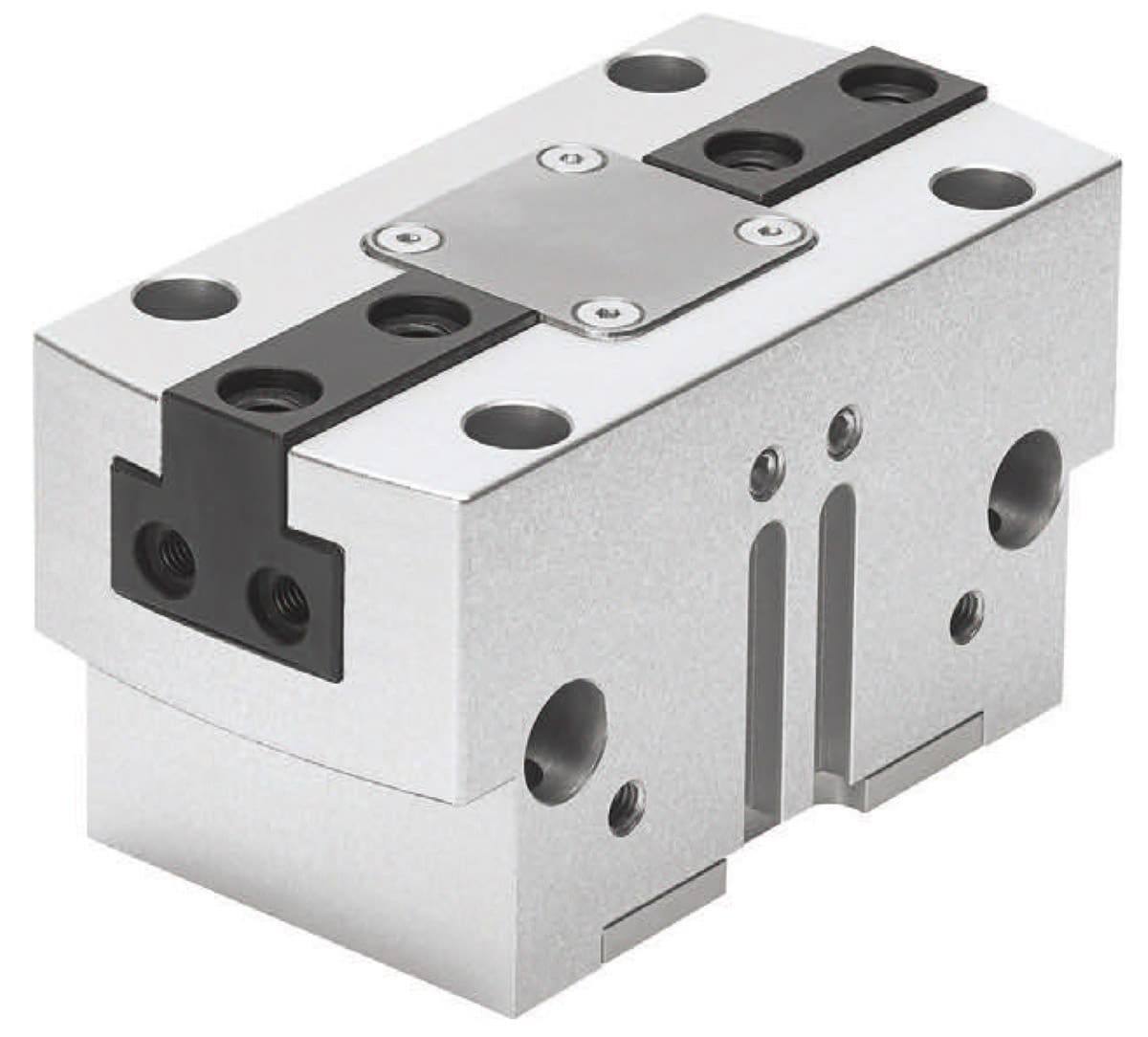
Cup shape is also an important factor, especially when it comes to gripping objects that are flat versus round, slim versus large, and sturdy versus delicate:
Standard cups — for flat or slightly undulating surfaces.
Bellows type — for pliable workpieces as well as surfaces that are bevelled, domed, or round. This type is also suitable for glass bottles, lightbulbs, and other delicate objects.
Oval type — for slim or oblong workpieces.
Extra deep — for round and domed workpieces.
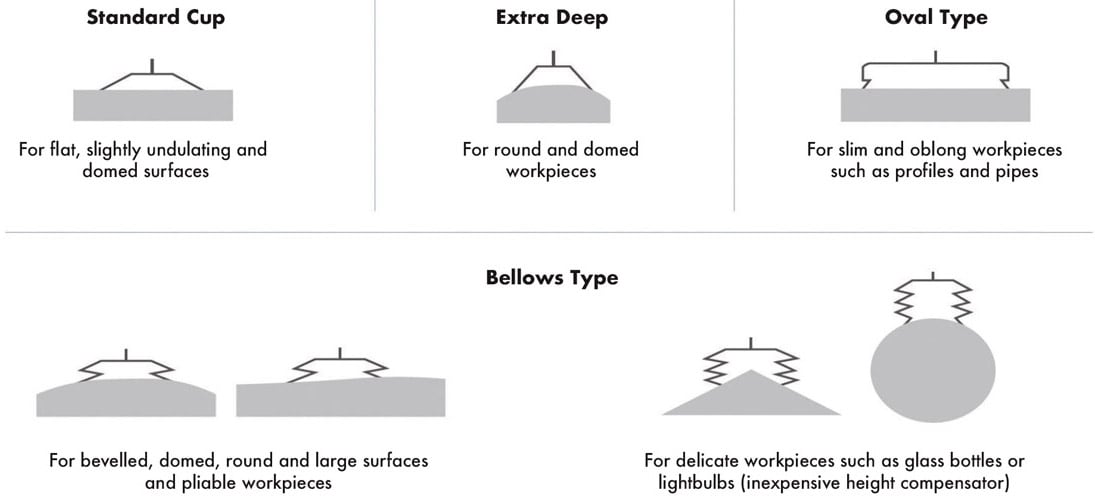
Vacuum sources fall into two categories: electro-mechanical vacuum pumps/ blowers as well as compressed air-driven vacuum generators/ejectors. In general, electro-mechanical pumps and blowers can achieve high vacuum and suction rates — up to 99.99 percent and 1,200 cubic meters per hour, respectively. At the same time, however, these machines tend to be heavy and large, requiring a reservoir with a complex piping system. Because they run continuously, they also consume a lot of current, which generates heat.
Compressed-air-driven generators, especially single-stage units, overcome many of these challenges. Compared to electro-mechanical pumps and blowers, they are more compact, lightweight, and easier to install. They include simpler piping systems, require lower upfront costs, and incorporate no electrical connections, eliminating harmful heat buildup. Although these units can run up your air consumption rates, many machines now come with energy-saving functions, minimizing these effects.
In general, vacuum grippers are ideal for material handling applications such as steel fabricators, conveyors, electronic assembly, and industrial robotics; food and packaging tasks including canning, bottling, capping, tray making, filling, bagging and sealing, conveying, box-making and labeling; and printing applications such as sheet feeding and handling.
Magnetic Grippers Offer Unique Benefits
Lastly, magnetic grippers can handle metallic objects like sheets of metal and are ideal for tasks like de-stacking, fixture tooling, and bin picking. Although these grippers are limited to applications involving ferrous metals, they require minimal air consumption to actuate, achieving energy savings up to 90 percent compared to suction cup grippers. Other benefits include:
Strong gripping. Magnetic grippers use a shallow magnetic field that enables material de-stacking.
True ON/OFF. Magnets can be switched completely off and stay clean; any metal fillings left behind from production processes instantly fall away.
Fast. Magnetic grippers can actuate in 250 milliseconds, saving valuable cycle time.
Safe. They provide fail-safe performance and will not drop parts in the event of a power or air loss.
Summary
No matter your application, there’s an ideal gripper for you — the right choice depends on a number of variables such as workpiece size and shape, operating conditions, industry, energy requirements, and cost. Unique handling applications could require a custom gripping device.
This article was contributed by Festo Corp. (Islandia, NY). For more information, visit here .


